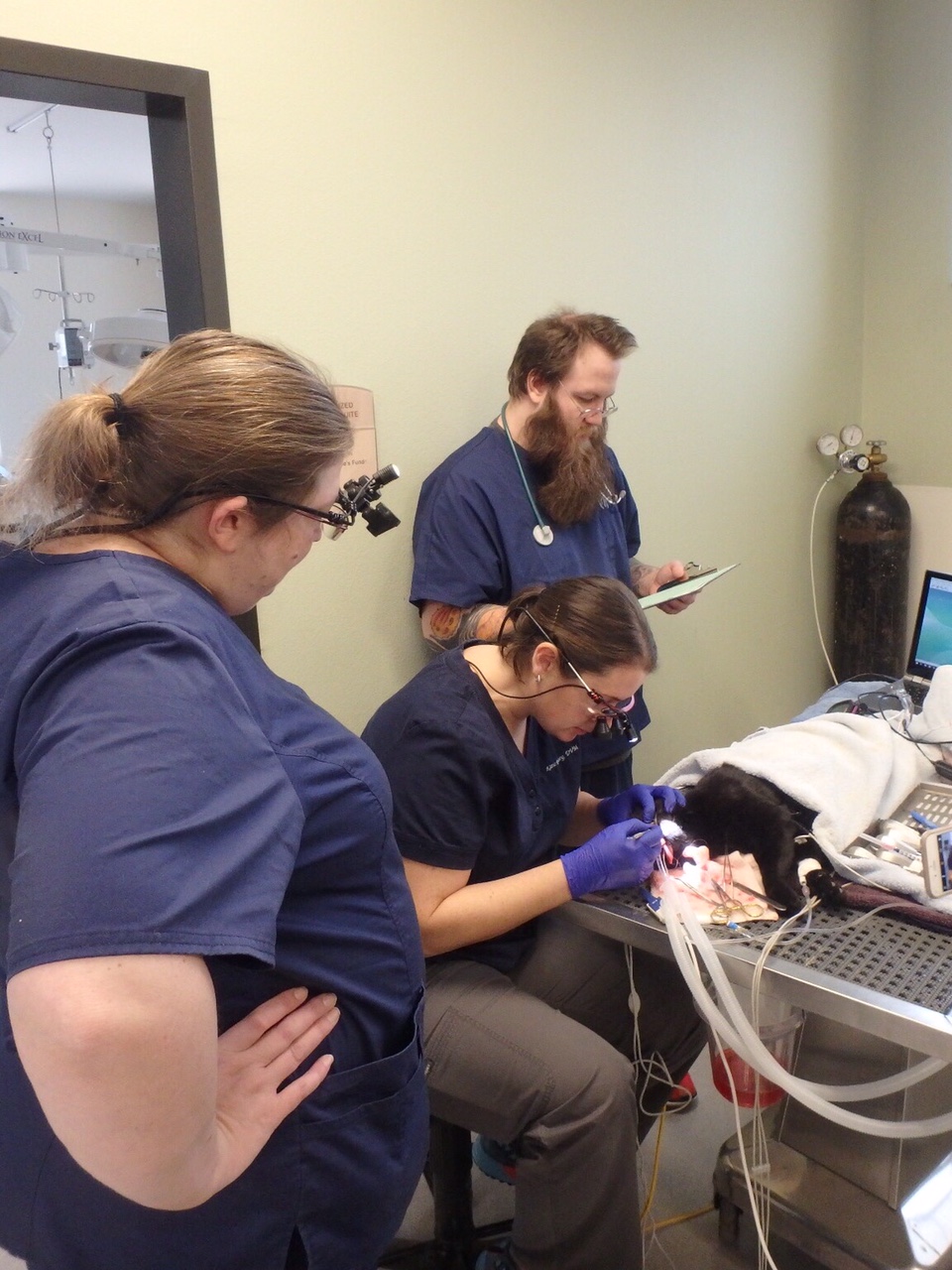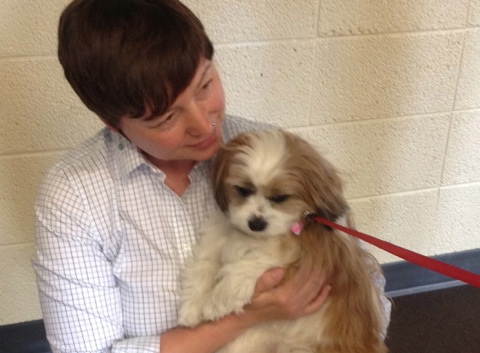Though the freedom of owning a small business can be exhilarating, going at it alone can be a tough ride. Operating costs can be higher for independent veterinary practices and hospitals (thanks to pricey equipment, medicine, and supplies) compared to large veterinary hospital chains, which can access discounts through bulk purchasing. So when veterinarians Ronald Anders, Donald Holst, Amir Shanan, and veterinarian practice business owner Scott Carlin founded The Veterinary Cooperative (TVC) in 2012, they hired co-op consultant Rich Morris to get it off the ground. Headquartered in Evanston, Illinois, TVC is the only veterinary co-op operating throughout the U.S. today. It has 1,500 members located in 49 states, as well as in Puerto Rico.
Shareable spoke with TVC Vice President Allison Morris to find out more about how her organization is helping its members thrive.
Why is there a need for a veterinary co-op?
Corporate organizations have a lot of great things going for them. They have centralized buying, so whenever they need to purchase anything — like pet food, vaccines, and syringes for 800 hospitals, for example — they can do it in bulk and get a good deal. They can have competitive pricing for services and they have a true business team running how these 800 hospitals should function, which helps the efficiency of these hospitals. The hospitals can charge less for services. That has started to make it harder for independently owned hospitals to compete.
And before the internet was around to price shop and before corporate organizations didn't exist, veterinarians were taught in school to just double the price for everything you purchase and you'll get a good margin. But these big corporate hospitals have found a way to make everything cheaper. That made independent hospitals [realize] they need to change how they do things to stay in business — and that's what we're trying to show them. We can show them how to continue to make a margin and a profit and also stay in business. This allows the pet owner to feel that the [independent veterinarians] can help them get nearly the same rates that these corporate hospitals are getting.
At the same time, the veterinarians can benefit from the great thing about being independent, which is controlling the business in the way they want to. They will still have a little bit of the personal touch that you hope to get when you bring your loving furry animal baby into a hospital for care.
What do you want to achieve?

Our goal is really to make sure that the independent veterinarian stays independent and in business. There's certainly been a lot of corporate roll up in the industry — large corporations buying out small independent clinics. I think it's really important for consumers who have pets to choose whether they want to go to a corporate or an independent hospital. And there are certain positives and negatives to each, but we think the choice is better than no choice.
So our overall goal is to keep independents around and that's what co-ops truly help do. We also want to have a 20 percent share of the industry as part of our co-op because we believe it will give us the strength to truly have power and make change and stick around for a long, long time. We're also trying to create a place on our website on transitioning a business to another owner so that when members want to retire or sell their business, they can keep it independent and not sell it to a corporation.
How does the co-op work?
TVC doesn't have any membership fees, which is an exciting thing for our members when they join. We do have a one-time joining fee of $1,000. We're governed by a board of directors. They're voted in by the membership at the annual meeting. The board really helps decide the direction, goals, and salaries that the staff has, as well as how we split up the leftover profits. Anyone can apply to be a board member of the co-op.
We make deals with our vendor partners where they do give us money for marketing their products or services to our members, and that's where we get our money from. The deals need to be enticing for our members, so this works for our members. Since we are a true co-op, if we have leftover profits we distribute them back to our members.
Our product committee (which is made up of a group of our members) are the ones who review the vendors who want to work with us. I help collect the requests for proposals and present them to the committee. They tell me which ones they want to pursue. So for example, let's say there's a pet food vendor who is offering us 20 percent off their pet food. If the product committee says yes we like the offer, then I make a Powerpoint slide of the proposal and let the board of directors all the details [of the proposal] and say the committee would like you to give the final approval for this vendor. I first talk to the vendors in person and over the phone to make sure they’re a good fit before their proposals go to the product committee.

Tell me about the impacts you've made.
In 2016, we were able to save our membership about $10 million in costs. That comes from rebate programs from purchases of supplies like pet food, discounts programs from vendors and promotions we run with our members.
We've also continued to help our members grow their sales and profits through TVC University, our business education program. Last year we did about 12 webinars with our vendors so they can understand products and services better. As a group, our members billed about $1.5 billion in revenue in 2016. But we're really building towards having a few in-person educational events. Our CEO Rich Morris, who used to be a college professor in Illinois, is putting together a program on good business practices in general. We're also are working on a way to get continuing education credits certified for our education programs so they can use these credits to keep up with their license.
What sort of goals have your veterinarians been able to accomplish that they wouldn't have been able to do if they weren't co-op members?
The biggest draw initially is the buying power through discounts and rebates. That's the biggest hook, since they don't get that purchasing power on their own. The education we have is always free, and I think it's very valuable. It’s only open to our members. I also think our co-op is a community. We have a social network online where members can talk to each other and be part of and something more powerful than a single practice. It allows them the ability to run their medical practice unlike any other business because they have that personal touch where they can treat each patient individually, yet they still have that advantage from discounts. It's a very unique way to run their business indeed.
What have your challenges been, and how have you addressed them?
One of our biggest challenges in the beginning was the chicken or the egg. We needed some great vendor deals to attract members to join our group, but our vendors didn't want to partners with us until we had enough members. At that time, we were selling more of a vision than a reality, but we go the job done. It was those early adopters from the member and the vendor side to help us become who we are. They trusted our vision.
Another challenge that we've had to face is we started growing so fast that it was hard to keep up with it. We started by using Excel spreadsheets and what really helped us get over those growing pains was implementing technology when it was needed — we created a TVC database to make it run smoother and faster. We also do have a very small staff, which is challenging, but as we continue to grow we make more money and we can bring in more people.
What are your future goals and endeavors?
One of our overall goals is that for as long as the veterinary industry is around, we hope that the vet co-op exists as well. Without a co-op, I don't know if independents can continue to exist. Our overall goal is for them to exist so consumers can have kind of care they want to get for their pets. We will continue to keep growing our membership and keep independents in the marketplace. Another goal that's important to use is to keep money local. When consumers purchase from big veterinary corporations or big box stores, that money is going back to the corporate offices. But if consumers are purchasing from local businesses, it helps to support the community they're in.
All photos courtesy of The Veterinary Cooperative.









